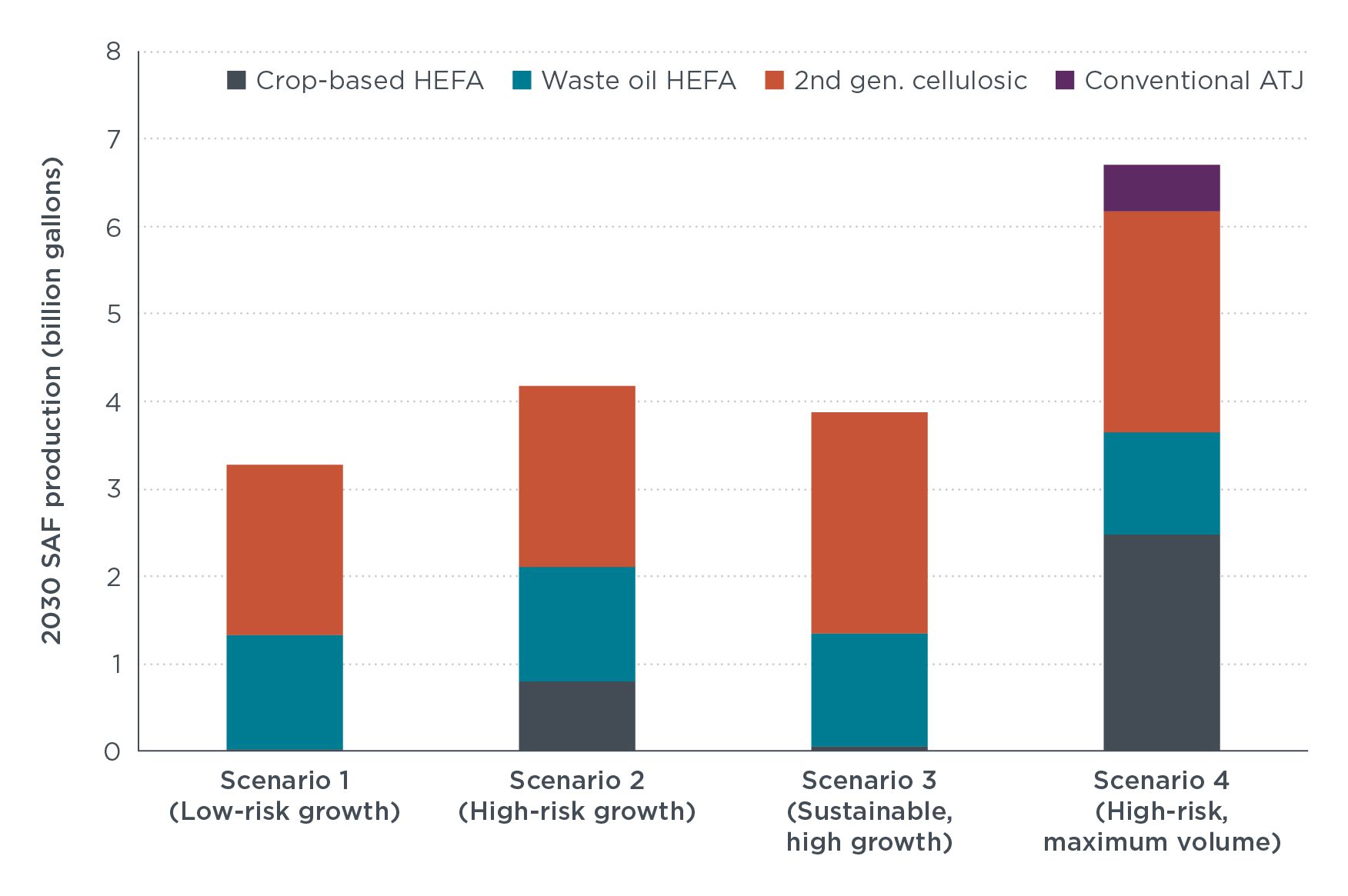Drawbacks of adopting a “similar” LCA methodology for U.S. sustainable aviation fuel (SAF)
White paper
Meeting the SAF Grand Challenge: Current and future measures to increase U.S. sustainable aviation fuel production capacity
The U.S. Sustainable Aviation Fuel (SAF) Grand Challenge, introduced in 2021 by the Biden Administration, outlines ambitious objectives for domestic SAF production, with a target of 3 billion gallons by 2030 and 35 billion gallons by 2050. This white paper examines the feasibility of achieving these targets. The study finds that the United States possesses the theoretical capacity to produce up to 21.7 billion gallons of SAF derived from biomass. However, we find that sustainable production, which avoids adverse market and environmental consequences, is limited to 12.2 billion gallons. While these resources are sufficient in principle to meet the 2030 SAF production target, they fall short of the 2050 goal.

Figure ES1. Estimated 2030 SAF production across four deployment scenarios
The paper underscores the importance of policy support, technology readiness, and feedstock sustainability in the success of the SAF Grand Challenge. It notes that the current system of fluctuating SAF tax credits, set to expire by 2027, creates uncertainty in the industry, discouraging investment in the types of advanced fuel pathways that require long-term policy certainty. Moreover, the potential exists for these tax credits to inadvertently support SAF pathways with high sustainability risks, such as purpose-grown biomass that competes with food and feed markets. Implementing policy safeguards would ensure that financial support is directed toward sustainable feedstocks and conversion technologies.
The analysis presents four illustrative scenarios that reflect a combination of policy incentives, technology delays, and feedstock eligibility requirements, shedding light on the dynamics of SAF production over time. This analysis that technology and facility deployment delays are likely to restrict near-term increases in SAF production, while meeting the 2050 targets will necessitate going beyond the sustainable availability of existing biomass, such as through the production of synthetic or “e-fuels”. The findings highlight the varying cost competitiveness of different SAF production pathways and the influence of policy incentives. While the United States has significant resource potential to produce SAF, achieving the SAF Grand Challenge targets will depend on sustained policy support, technological advancements, and a strong focus on advanced feedstocks and conversion technologies to ensure the long-term viability and cost-competitiveness of SAF.
This publication was updated on 30 May 2024 to correct the feedstock quantities in Table 7 for corn oil, UCO, and animal fats.
